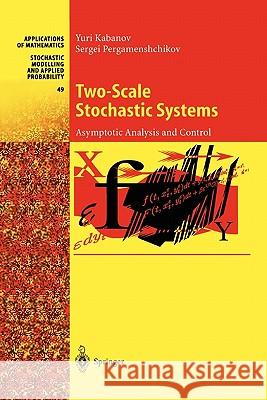Two-Scale Stochastic Systems: Asymptotic Analysis and Control » książka
Two-Scale Stochastic Systems: Asymptotic Analysis and Control
ISBN-13: 9783642084676 / Angielski / Miękka / 2010 / 266 str.
Two-Scale Stochastic Systems: Asymptotic Analysis and Control
ISBN-13: 9783642084676 / Angielski / Miękka / 2010 / 266 str.
(netto: 186,11 VAT: 5%)
Najniższa cena z 30 dni: 192,74 zł
ok. 20 dni roboczych.
Darmowa dostawa!
In many complex systems one can distinguish fast and slow processes with radically di?erent velocities. In mathematical models based on di?er- tialequations, suchtwo-scalesystemscanbedescribedbyintroducingexpl- itly a small parameter?on the left-hand side ofstate equationsfor the fast variables, and these equationsare referredto assingularly perturbed. Surpr- ingly, this kind of equation attracted attention relatively recently (the idea of distinguishing fast and slow movements is, apparently, much older). Robert O Malley, in comments to his book, attributes the originof the whole historyofsingularperturbationsto the celebratedpaperofPrandtl 79]. This was an extremely short note, the text of his talk at the Third International Mathematical Congress in 1904: the young author believed that it had to be literally identical with his ten-minute long oral presentation. In spite of its length, it had a tremendous impact on the subsequent development. Many famous mathematicians contributed to the discipline, having numerous and important applications. We mention here only the name of A. N. Tikhonov, whodevelopedattheendofthe1940sinhisdoctoralthesisabeautifultheory for non-linear systems where the fast variables can almost reach their eq- librium states while the slow variables still remain near their initial values: the aerodynamics of a winged object like a plane or the Katiusha rocket may serve an example of such a system. It is generally accepted that the probabilistic modeling of real-world p- cesses is more adequate than the deterministic modeling."











